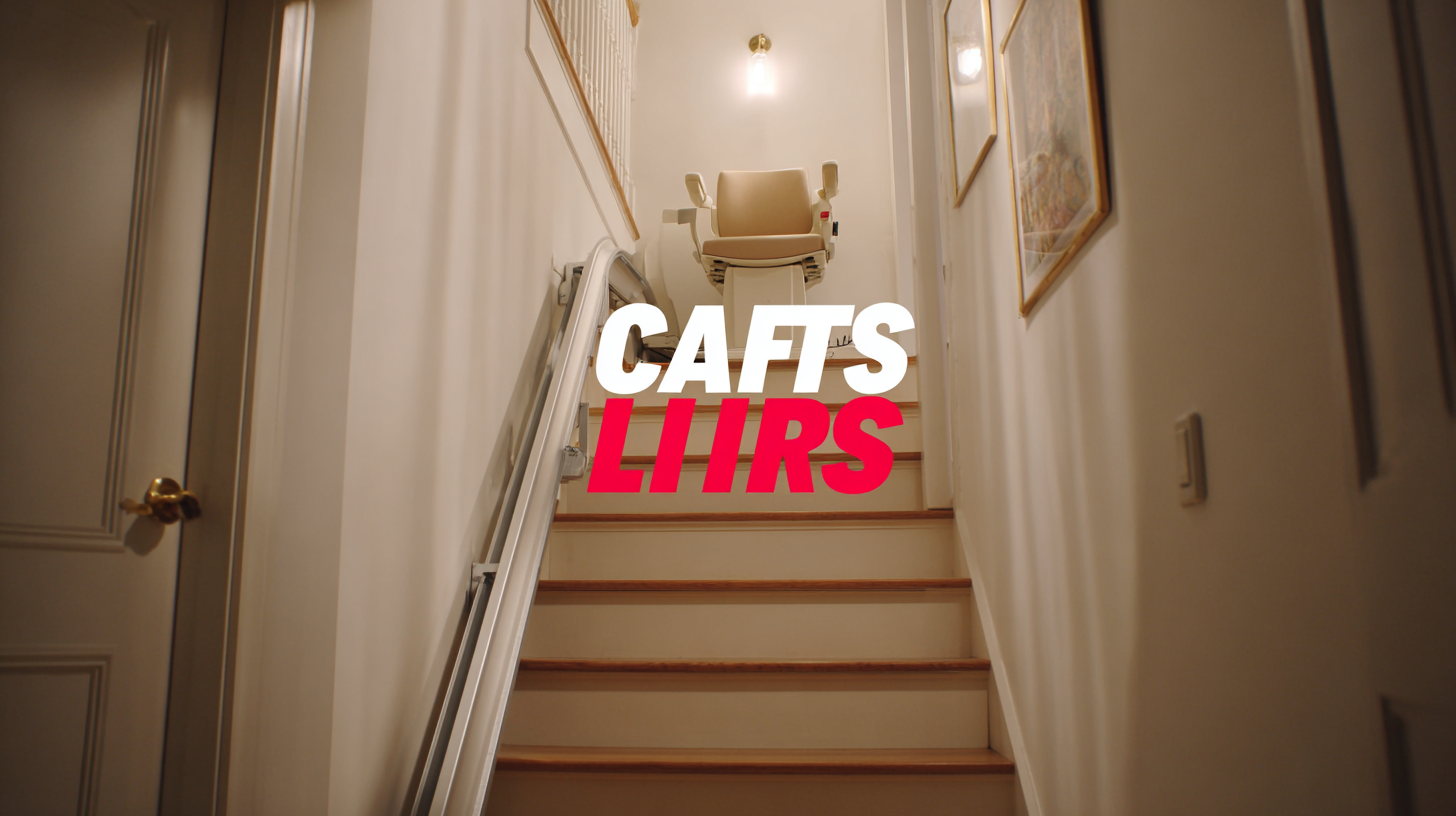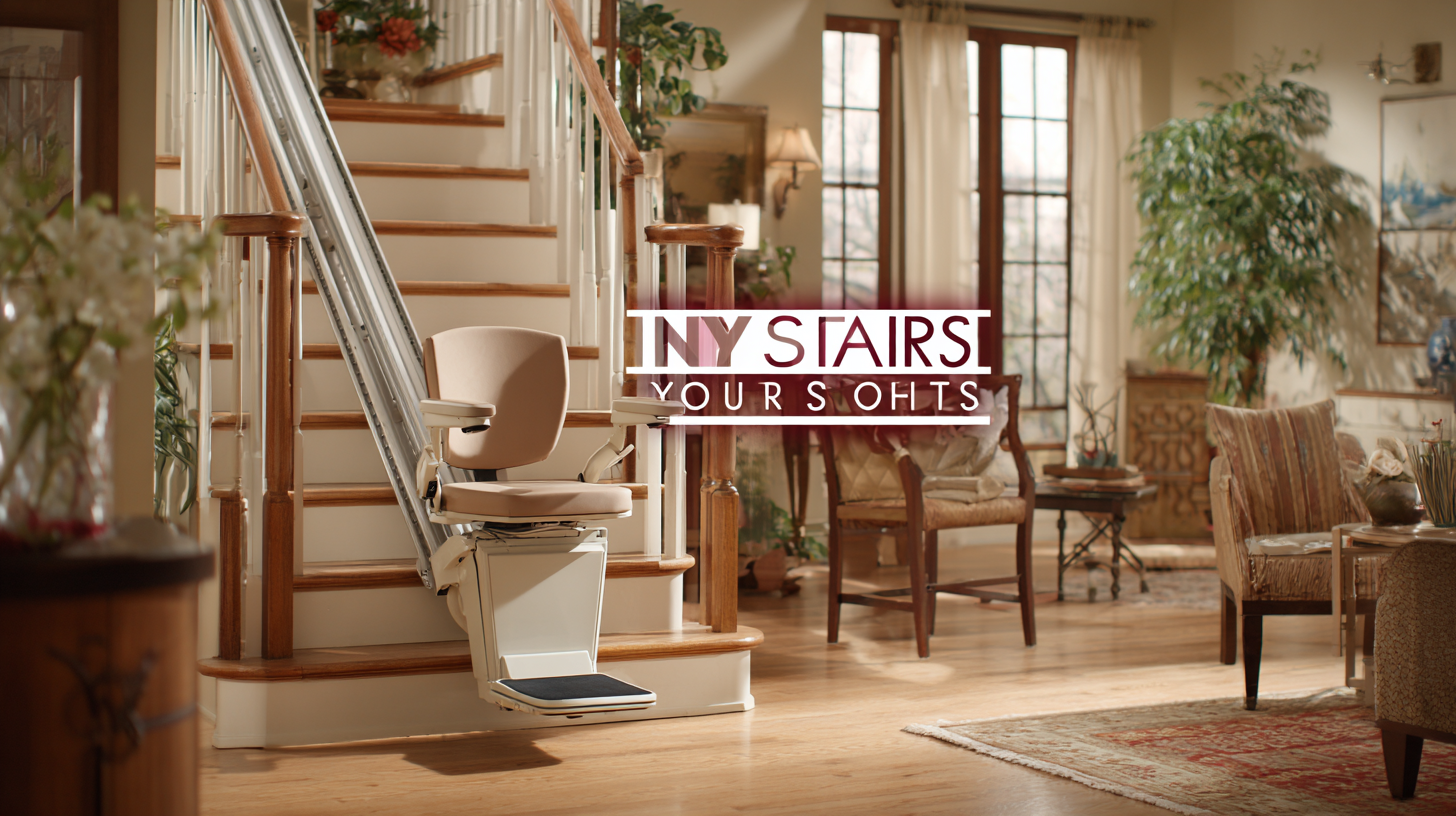
Innovative Solutions for Choosing the Best Chair Lift for Stairs in Your Home
As the population ages, the demand for accessibility solutions in the home has surged, with the market for mobility aids projected to reach $9.6 billion by 2025, according to a report by Grand View Research. Among these solutions, a Chair Lift for Stairs stands out as a vital addition to enhance safety and comfort for individuals with limited mobility. It not only facilitates independence for seniors but also addresses the needs of those recovering from surgery or dealing with chronic conditions. A well-chosen chair lift can significantly reduce the risk of falls, which account for over 800,000 hospitalizations annually, as reported by the Centers for Disease Control and Prevention. Given the variety of options available, understanding the key features and benefits becomes essential for homeowners looking to make informed decisions that best meet their needs.

The Importance of Assessing Your Home’s Layout for Chair Lift Installation
When considering the installation of a chair lift for stairs in your home, assessing your home’s layout is a critical first step. The physical configuration of your space determines not only the type of chair lift that will work best but also the installation process itself. For instance, if your staircase has sharp turns or is particularly narrow, opting for a customized chair lift model will be essential to ensure smooth and safe navigation. Measuring the width of the staircase and the landing areas provides essential information that can help you avoid potential hazards and guarantee that the installation is seamless.
Additionally, evaluating the design and traffic flow of your home can influence where the chair lift will be positioned. Consider the proximity of doorways, furniture placement, and the environment around the stairs. A clutter-free and accessible pathway will make the lift more user-friendly and increase its functionality. By taking the time to carefully assess these factors, homeowners can choose an ideal chair lift solution that not only blends with their home’s aesthetics but also enhances safety and accessibility, making daily life much more convenient.
Innovative Solutions for Choosing the Best Chair Lift for Stairs in Your Home
| Dimension | Description | Considerations | Example Features |
|---|---|---|---|
| Stair Width | The width of your stairs. | Ensure the chair lift fits comfortably. | Width adjustability options. |
| Stair Design | Straight, curved, or spiral stairs. | Choose a compatible lift model. | Curved rail options, track length. |
| Weight Capacity | Maximum weight the chair lift can support. | Assess user weight to match specifications. | Standard, heavy-duty capacity options. |
| Power Source | Electric, battery-operated, or hydraulic. | Consider power accessibility for installation. | Rechargeable batteries, main power options. |
| Safety Features | Safety belts, obstruction sensors, and emergency stop. | Evaluate safety needs of users. | Automatic shut-off, safety sensors. |
Comparing Cost-Effectiveness of Chair Lifts vs. Other Mobility Solutions
When considering mobility solutions for navigating stairs in the home, chair lifts often emerge as a cost-effective option compared to alternatives such as residential elevators or stair-climbing wheelchairs. According to the National Association of Home Builders, the average cost of a stair lift ranges from $2,500 to $5,000, while the installation of a residential elevator can climb as high as $30,000. This significant price difference highlights the affordability of chair lifts, making them an attractive solution for many households.
In addition to their lower initial investment, chair lifts also provide practical benefits in terms of installation and maintenance. Many models can be installed without major home modifications, reducing upfront expenses. A study by the AARP found that 73% of older adults prefer to age in place, making affordability and ease of use critical factors in mobility solutions. Chair lifts, with their straightforward operation and minimal upkeep, align well with this preference, delivering both independence and safety for users without the steep costs associated with more complex systems.
Understanding Different Types of Chair Lifts: Straight vs. Curved Options
When considering a chair lift for stairs, homeowners must first understand the fundamental differences between straight and curved options. According to a report by the National Aging in Place Council, nearly 90% of seniors prefer to age in place, making home accessibility increasingly important. Straight chair lifts are generally the most cost-effective solution, ideal for homes with straightforward staircase layouts. Typically, these models can be installed more quickly and with less complexity, averaging around $3,000 to $5,000, making them accessible for many families.

In contrast, curved chair lifts cater to more complex stair designs, including spirals and multi-level staircases. These systems are often custom-made to fit specific designs, leading to higher installation costs, typically ranging from $10,000 to $15,000. Despite the higher expense, many families find value in the tailored solution that enhances mobility throughout the home. Research indicates that 73% of users report increased independence and confidence after installing a chair lift, highlighting the significant impact these devices have on daily living. As such, evaluating the unique needs and layout of your home will be crucial in deciding between straight and curved chair lifts.
Evaluating Safety Features: What to Look for in a Chair Lift
When selecting a chair lift for your stairs, evaluating safety features is paramount to ensure a secure and comfortable experience. First and foremost, look for systems equipped with robust safety belts and easy-to-operate controls. A well-designed chair lift should allow users to secure themselves easily, minimizing the risk of accidents during operation. Additionally, consider the presence of safety sensors that can detect obstructions along the track. These sensors will halt the lift’s movement if anything is in its path, preventing potential injuries and damage.

Another crucial safety feature to assess is the presence of a reliable power backup system. In case of a power outage, a chair lift with a battery backup will allow users to safely reach their destination without being stranded. Furthermore, examine the design of the chair itself; a swivel seat can provide added safety by facilitating easier boarding and disembarking. Lastly, ensure that the chair lift has a non-slip surface and armrests for enhanced stability. By thoroughly evaluating these safety features, you can select a chair lift that not only meets your mobility needs but also prioritizes your well-being at home.
User Experience and Comfort: Key Factors in Choosing the Right Chair Lift
When selecting a chair lift for stairs, user experience and comfort are paramount. According to a survey conducted by the National Association of Home Builders, about 75% of seniors express a desire to age in place, highlighting the significant demand for home modifications that promote safety and accessibility. A well-designed chair lift not only facilitates mobility but also enhances the daily living experience for users. Factors such as ease of use, smooth operation, and user-friendly controls can drastically impact how comfortable and secure a user feels while navigating their home.
Comfort is another critical element that can influence a user's choice. A study published in the Journal of Rehabilitation Research found that 65% of users reported discomfort when using poorly designed stairlifts, leading to reduced usage over time. To address this, manufacturers are now focusing on ergonomic designs that support natural body posture and cushioning that promotes relaxation. Features such as adjustable seating position, customizable footrests, and even heated seats are gaining traction, ensuring that users not only feel safe but also comfortable during each ride.
By prioritizing these factors, homeowners can make informed decisions that align with their mobility needs and enhance overall quality of life.












